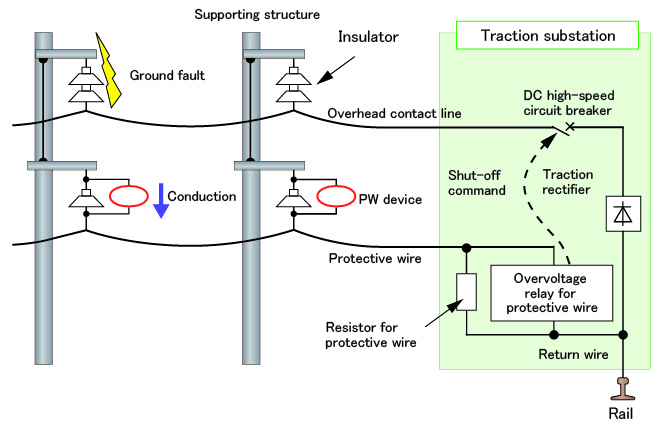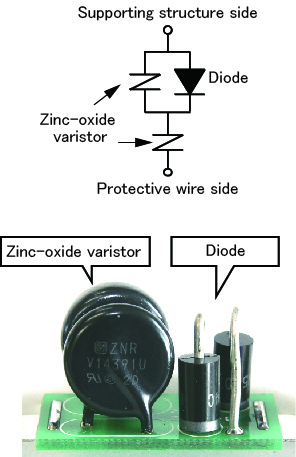7. High-resistance ground fault detection system for DC feeding circuit using protective wire and PW devices
- In the case of DC feeder circuits faults sometimes occur in high-resistance ground circuits through the insulators and other support components. A system was thus developed to immediately detect such faults using a protective wire (PW) and PW devices.
- The effectiveness of the system was validated on a revenue line with tests where faults were manually induced.
In DC feeder circuits faults sometimes occur, due for example to lightning strikes, in high resistance ground circuits through components such as insulators which support overhead contact lines. When a ground fault occurs and the resulting faulty current is lower than the normal current load (also known as high resistance ground faults), then the fault is not detected at the substation and the current continues to flow on through to the overhead contact line etc., which in turn can cause wire breakage or other damage to equipment. As a result, a system was developed which makes early detection of high resistance ground faults possible at the substation.
At the same time as developing the high resistance ground fault detection system, a guard wire was laid parallel to the overhead contact line (Fig.1). A zinc oxide element diode was fitted between the support components and the guard wire, to form a protective device. (Fig.2). When a high resistance ground fault occurs, the earth potential of the supporting component rises which in turn increases the voltage in the protective wire as the protective element acts as a conductor. This voltage is detected by the voltage relay in the guard wire, immediately cutting off the power supply. The conductivity characteristics of the protective element are asymmetrical because of the diode. Therefore, the protective element will not act as a conductor outside the fault point.
A prototype was made of the protective element and guard wire voltage relay. A model system was then built selecting one line to be the protected line on a double track section of commercial line. A test was performed to validate the developed system for detecting high resistance ground faults. Results confirmed the effectiveness of the system, as the relay in the substation functioned when the actual voltage in the guard wire rose simultaneously during the manually provoked ground fault test.

Fig.1 Schematic diagram of the developed high-resistance ground fault detection system
Fig.2 Structure of PW device